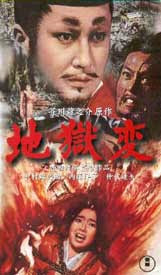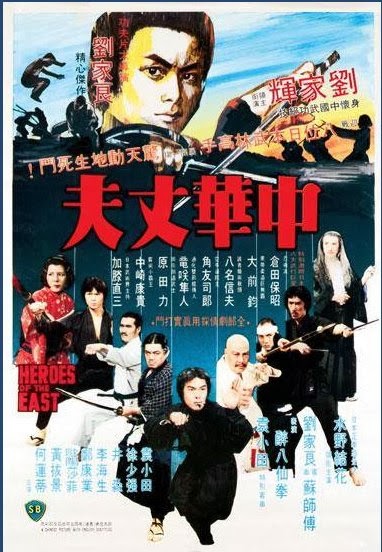There's an element of forbidden, fatal fantasy to Gentleman's Fate as LeRoy invites us to imagine what we'd do if we suddenly became gangsters, but closes with the warning that we'd probably die. Gilbert plays the fish out of water, ambitious orphan socialite Jack Thomas who lives off a trust fund of origins he couldn't care less about. Jack gets a shock when his guardian summons him to a revelation: "You have a father." It takes a while for it to sink in that, contrary to his belief, Jack has a living father, though he won't be living much longer. The old man's dying in a Jersey City hotel with a bullet in his chest. A hunting accident? Jack asks. No, he was the one being hunted.
At the hotel, Jack meets his natural brother, Frank Tomasulo (Wolheim) -- "he's a bit older than you are," the guardian warned -- before seeing the father he never knew. Turns out that the Tomasulos are bootleggers, but that the old man entrusted Jack to a friend so he could grow up innocent of the family business. But Frank believes that Jack -- Giacamo, really -- owes it to the family to pitch in during the crisis. Jack wants no part of it, but Frank can be very convincing. Like a superhero in reverse, Jack tries to keep his new life secret from his fiancee (Leila Hyams), but you know how things happen in the movies. Soon Jack has to pay his dues by taking the rap for a minor offense. He takes his anger out on Frank in a nicely staged fight scene -- Gilbert and Wolheim take turns charging at the camera and throwing punches as LeRoy cuts from one punching to the other reeling across the room -- but when he learns that his fiancee has left him he calms down and accepts his lot, at least for the moment. He still plans to get out of the business eventually and win the girl back.
Jack has to flee to Canada after killing a gunman for a rival outfit during a border hijacking, taking over the distribution of contraband booze for his brother. When he returns to New Jersey he still wants out, hoping he can still get his girl, but Frank shows him a newspaper society page announcing her wedding to another man. The news gets Jack started on a bender in which art anticipates life. Meanwhile, Frank has arranged a "peace banquet" to end the rivalry with the Florio mob, while Florio himself (John Miljan) suspects Jack of killing his brother and wants revenge. When Jack, on the rebound, falls for the brother's former moll Ruth (Anita Page), whom Florio wanted to act as a spy on the Tomasulos, Florio feels doubly wronged. The peace banquet is tensely comic as the gangsters and their molls -- the ladies are packing for their men because they won't be searched -- show their bad table manners in a parody of civility. The illusion dissipates when a drunken Florio insults Jack and Ruth and Jack -- who retained his table manners to this point -- socks him. LeRoy cuts to a brilliant shot of the molls passing their rods back to their men under the table, but a detail of police shows up before open warfare can break out and Frank manages to defuse the situation, for the moment.
Florio still wants revenge on Jack and takes advantage of an obvious Tomasulo plant in his ranks to spread misinformation and catch the enemy off guard. He announces his time of attack in earshot of the stool pigeon, who promptly marches upstairs to a phone booth to warn the Tomasulos. Once the fool blabs as Florio wanted him to, Florio shoots him in the back through the glass of the booth without leaving his seat, and the gang watches casually as the corpse tumbles backward down the stairs. The climax is well-staged for suspense and action as Ruth walks into the trap, but her girlfriend sees a rival moll finger her for Florio and runs to Tomasulo headquarters for help, while Frank blithely walks into the trap without warning. Ruth can defend herself, it turns out, and shoots Florio in the back. Jack finishes him with a shot through a fire-escape window before he can shoot Ruth, but not before Florio inflicts a mortal wound on our hero. The finish is sadly corny as Frank promises on Jack's deathbed to get out of the rackets (see also Paddy Ryan in The Public Enemy later in 1931) and Jack announces, "I'm getting out ... right now."
It may be because Jack, despite his ethnicity, is not an "authentic" gangster that Gentleman's Fate lacks the visceral vitality of Public Enemy or LeRoy's Little Caesar, despite several effective action scenes. This isn't a rise-and-fall story but an improbably fantasy of a man improbably inheriting a dangerous throne. The fish-out-of-water situation gives us considerable leeway to forgive Gilbert's limitations, but the fact remains that his voice lacks personality, much less power or authority. For a moment in the later Phantom of Paris he'd find the right kind of charismatic arrogance in a role to fit his voice, but as a tragic antihero here he still sounds too often like a bank clerk. He's at his best in his scenes with Wolheim, who had the great character actors' gift for elevating his interlocutors, when the contrast of voices and personalities is the point of the action. Wolheim's increasingly sympathetic gangster ultimately seems like a gangland version of his wise old soldier from All Quiet on the Western Front, which may have won him this part after Bickford bailed on it. He's no more an Edward G. Robinson than Gilbert is a Cagney, and Gentleman's Fate feels like a relic of the oldschool crook film that LeRoy had just made obsolete. He was obviously an important piece of the success of the Warner Bros. gangster film, but not really the right one to choose if another studio wanted to imitate it. The presence of the ghostly Wolheim and the doomed Gilbert only makes the film look more like a dead end in the history of gangster films, but it has enough energetic Pre-Code action to keep it interesting if not entirely entertaining.

 J
J
 E
E